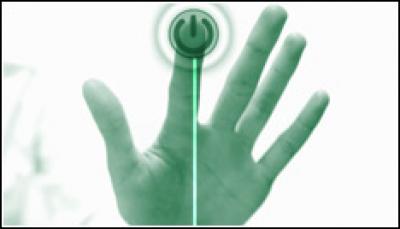Companies Not Helping Themselves With Data Centre Efficiency

Green Grid research reports that most companies are not offering incentives to their employees to help increase energy efficiency
Two-thirds of enterprises that deploy data centres currently have no corporate incentives in place for increasing energy efficiency in those IT systems, industry research made public on 4 Feb.by The Green Grid reported.
This equates with the fact that most companies are not currently offering incentives to their employees to help increase energy efficiency, even though doing so could mean substantial bottom-line and environmental results, the report said.
“Incentives do not have to be monetary to be effective; employees often value verbal acknowledgement,” the Green Grid’s Data Collections and Analysis workgroup wrote in the report. “A company’s initiative to boost energy efficiency may meet with greater success if it includes some form of employee incentives.”
Incentives also can come from external sources. Pacific Gas & Electric in Northern California, for one, offers cash rebates to companies that demonstrate energy savings.
For example, network storage provider NetApp, whose headquarters is located in PG&E’s service area, received a $1.4 million (£900,000) rebate in December 2008 from the utility, largely as the result of a new green corporate data centre on its Sunnyvale, Calif., campus.
The Green Grid, which concluded its third annual Technical Forum on 4 Feb, discussed the results of its Data Center Energy Measurement Survey analysis during the event. The survey of 151 data center managers was completed last November but had to undergo vetting by the Environmental Protection Agency before being publicised.
The survey of data centre managers and IT decision-makers also confirmed that despite the best efforts of the Green Grid, Save Energy Now and the EPA’s Energy Star Program, the industry does not yet have a consistent process for measuring energy usage.
Only a little more than half of the respondents (54 percent) said they actually measure the energy effectiveness of their data centers using two relatively new formulas: PUE (power usage effectiveness) and DCiE (data centre infrastructure efficiency).
PUE is a metric created in 2009 by the Green Grid that determines the amount of energy used by a facility and all the IT gear inside of it. A PUE score is a ratio of total facility power divided by IT equipment power. Ideally it should be less than 2 to 1; the closer to 1 to 1, the better.
DCiE is expressed as a percentage: i.e., IT equipment power x 100, divided by total facility power. The bigger the number, the better. A data center’s DCiE should never be more than 1.
Of the survey respondents, approximately one-third use dedicated power meters on servers, storage equipment and network equipment; another one-third rely on nameplate values; and one-third do not measure energy usage at all.
Lead contributors to the report were Ron Bednar and Jessica Winiecki of Emerson Network Power and Kathrin Winkler of EMC.
The Green Grid also introduced two new online tools for measuring PUE and DCiE that will become available next month.
Earlier on 4 Feb, environmentalist Robert F. Kennedy Jr. explained in a Technical Forum keynote address that he believes the IT sector should be the prime mover in the establishment of a new power grid able to transport renewable power resources over long distances.
Organisations like the Green Grid can play important roles in the design and construction of a modern power grid, which would bring huge economic and environmental benefits to the world community, Kennedy said.
The Green Grid is a 3-year-old nonprofit trade organisation of IT professionals formed to address the issues of power and cooling in data centres. The organization, made up of mostly of IT vendors but that also includes educational and nonprofit organisations, seeks to define best practices for optimising efficient energy usage in both power and cooling at the IT equipment and facility levels.
For more information or to download a copy of the report, go here.